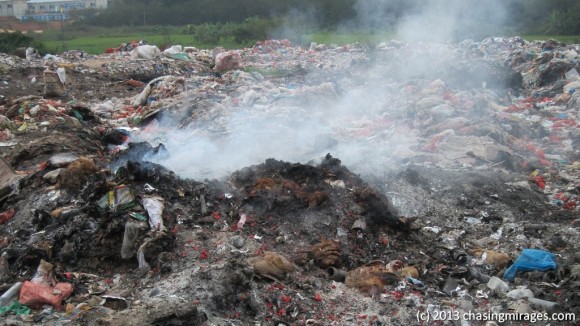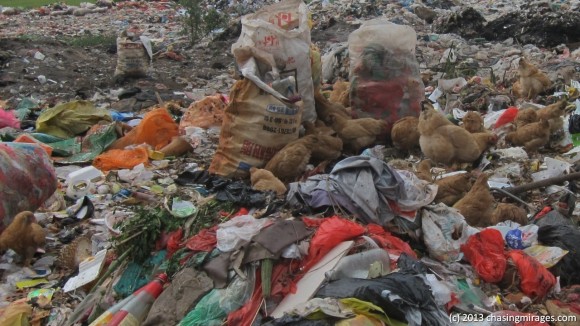You may recall that awhile back, I participated in an expedition to explore the watershed of Dongjiang River, the source of 80% of Hong Kong’s water supply. Over 90% of the watershed’s land area is in Guangdong Province, while the remainder is in Jiangxi Province. As you can see from the route map above, we traced the river from its mouth (lower right) at the Pearl River Delta (虎門) up to its source (upper right) in the mountains of southern Jiangxi.
Through written treaties, China has promised to provide a continuous supply of Dongjiang water to Hong Kong as well as maintain Dongjiang’s high water quality. Despite these promises, many are skeptical of China’s sincerity.
For several reasons (first, political sensitivity, then, laziness), I’ve held off on posting about that expedition…until now.
China is not only obligated by international treaties to keep Dongjiang clean, doing so would serve its own long-term interests. Try avoiding chaos when 1.3 billion people realize that the country only has enough clean drinking water for the most privileged 1%.
In short, we found that government agencies are aware of the importance of protecting Dongjiang, have promulgated policies to further Dongjiang’s protection, and in many cases have even taken action to execute these policies. However, on-the-ground implementation of protection measures are often ineffective, non-existent, or in the worst cases, damaging.
To avoid boring you, I’ll only post portions of the trip that are most memorable to me. More often that not, these portions are also the most heartbreaking.
In Guangdong province, near the town of Duozhu in Huidong County (æƒ æ±ç¸£ï¼Œå¤šç¥éŽ®ï¼‰, we spotted a garbage pile clearly visible from the road, so we pulled in to check it out. It was a huge open-air garbage dump situated just a few hundred meters from a major tributary of Dongjiang, the Xizhijiang River (西支江).
As we recovered from being nearly overwhelmed by the putrid stench (it’s amazing how quickly we adapt and start ignoring even intense odors), we noticed smoke in the distance (it was a big dump, several football fields in area) and approached for a closer look. This is what was burning:
A pile of dead chickens!  I somehow became even more repulsed than before. We asked one of the guys living at the dump what had happened to these chickens, and he said that every time it rains, some of them get sick with what he called white-shit disease (白屎病) , and they burn the ones that die. My guess is that rainwater increases the release of toxins into the chickens’ food and water supply and also promotes bacterial growth. Meanwhile, a bunch of “healthy” chickens were happily scrounging among the garbage:
Note that the garbage in this dump is a potpourri – household garbage, industrial garbage, agricultural garbage, construction garbage. Although the people living at the dump were ostensibly there to sort out recyclable material and things that could be sold as scrap, it didn’t look like they were doing a good job. Their lack of motivation can be explained by the following conversation:
Me: “Do you eat these chickens?”
Garbage dump man: <scoffs>
Me: “So what do you do with them?”
Garbage dump man (proudly): “We sell them to the hotels in the cities as free-range chickens (生態雞). We make a lot of money!”
Good lord.  Our faces turned green. Of course, we decided to have chicken for lunch.



May 10, 2013 at 01:01
thanks for your posts! your blog is simply raw and real, and it’s a very refreshing and valuable read…
June 15, 2013 at 14:56
Thanks for reading!!!
March 2, 2013 at 07:43
wow. both funny and sad at the same time.